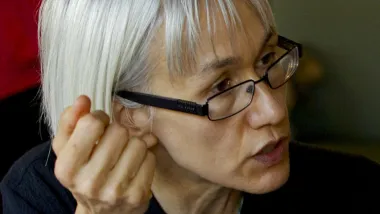Some people choose to work in planning because they see it as a relatively interesting and stable job. Others have dreams of being the equivalent of an all-powerful SimCity-style mayor. However, many choose planning as a career because they want to make a difference in the world. They want to do good and to help those who are the least advantaged. They are attracted by the potential, if limited, for planning to foster environmental justice and social equity.
Some people choose to work in planning because they see it as a relatively interesting and stable job. Others have dreams of being the equivalent of an all-powerful SimCity-style mayor. However, many choose planning as a career because they want to make a difference in the world. They want to do good and to help those who are the least advantaged. They are attracted by the potential, if limited, for planning to foster environmental justice and social equity.
But figuring out the best strategies for doing good can be a bit complicated, particularly for students entering the field. One can certainly read widely and discuss issues with local peers. However, several groups provide larger networks for learning about these issues, debating straegy, and finding support. In the U.S., three of the longer-running groups--established in the 1970s and 1980s--are particularly important.
Architects, Designers, and Planners for Social Responsibility (ADPSR), established in the early 1980s, is a network of professionals interested in social issues from opposition to war to green building. A current project is organizing architects to boycott prision design work. Its main chapters are in New York and the Bay Area. Many members are architects in fairly traditional private practices who want to meet others with social concerns, although as the name indicates, their membership extends beyond this group. They have a web site, local list serves and events, and an affiliated book publisher New Village Press.
The Association for Community Design (ACD) was founded in 1977 as a network of community design and neighborhood plannning centers. The organization is still dominated by those groups of folks who are making a difference rather than just talking about change. Their focus on action and not just criticism is impressive. Members are particularly interested in affordable housing and participatory design. While many members are architects, planners can feel at home given the non-profit and participatory focus. They have a web site and annual conferences.
Planners Network (PN) members are planners and activists interested in social and environmental justice. Founded by Chester Hartman in 1975, PN has a web site, quarterly magazine--Progressive Planning, monthly e-newsletter, chapters, and annual conferences. A disorientation guide provides information for students. Members are a mix of planning students, academics, professionals, and community activists. Unlike ADPSR and ACD where the design fields are dominant, the focus of PN is on planning, if broadly defined. The organization issues statements on issues such as the war in Iraq and the Israeli Wall.
In 2007 these three groups held coordinated conferences in New Orleans and Baton Rouge with sponsorship from Planetizen (thanks!).
Of course there are other organizations. There has been a recent trend for architects to form groups interested in disaster relief and many have attracted planning students. Some divisions of the American Planning Association--particulary Planning and the Black Community, GALIP, Planning and Women, Latinos and Planning, and Indigenous Planning also deal with some of the same topics and concerns. However, PN, ACD, and ADPSR have a long tradition of being independent voices for social change. For planning students, and others, interested in making a difference they can provide important support.
Ann Forsyth is on the Editorial Board of Planners Network and the Board of the Association for Community Design. Over the years has been a member of a majority of the organizations and APA divisions mentioned in this blog. This is the first part of a two-part blog.

Planetizen Federal Action Tracker
A weekly monitor of how Trump’s orders and actions are impacting planners and planning in America.

Chicago’s Ghost Rails
Just beneath the surface of the modern city lie the remnants of its expansive early 20th-century streetcar system.

Amtrak Cutting Jobs, Funding to High-Speed Rail
The agency plans to cut 10 percent of its workforce and has confirmed it will not fund new high-speed rail projects.

Ohio Forces Data Centers to Prepay for Power
Utilities are calling on states to hold data center operators responsible for new energy demands to prevent leaving consumers on the hook for their bills.

MARTA CEO Steps Down Amid Citizenship Concerns
MARTA’s board announced Thursday that its chief, who is from Canada, is resigning due to questions about his immigration status.

Silicon Valley ‘Bike Superhighway’ Awarded $14M State Grant
A Caltrans grant brings the 10-mile Central Bikeway project connecting Santa Clara and East San Jose closer to fruition.
Urban Design for Planners 1: Software Tools
This six-course series explores essential urban design concepts using open source software and equips planners with the tools they need to participate fully in the urban design process.
Planning for Universal Design
Learn the tools for implementing Universal Design in planning regulations.
Caltrans
City of Fort Worth
Mpact (founded as Rail~Volution)
City of Camden Redevelopment Agency
City of Astoria
City of Portland
City of Laramie






























